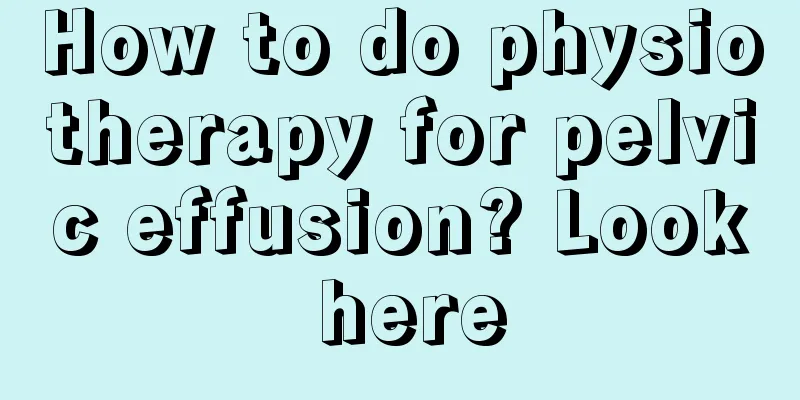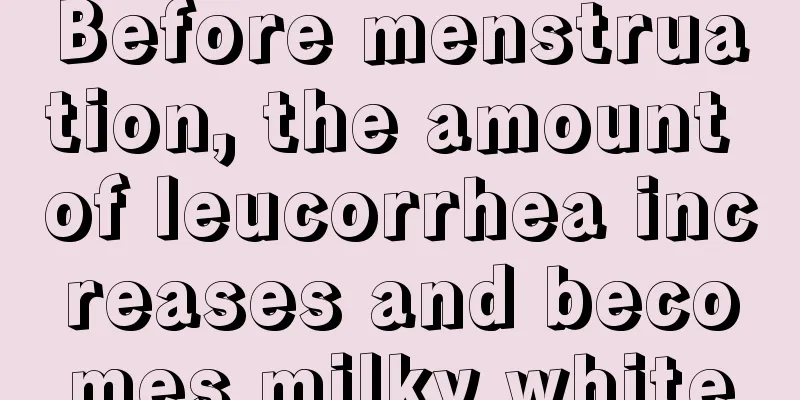How to do physiotherapy for pelvic effusion? Look here

|
Pelvic effusion is one of the common gynecological diseases in women, which is often manifested by lower abdominal pain, increased leucorrhea, sudden lower abdominal distension and pain, etc. So how to treat pelvic effusion? 1. Traditional Chinese medicine treatment Chronic pelvic inflammatory disease is mostly of damp-heat type, and the treatment principle is to clear away heat and dampness. The main function of the prescription is to promote blood circulation and remove blood stasis. The prescription uses: Salvia miltiorrhiza 18g, Red Peony Root 15g, Costus Root 12g, Peach Kernel 9g, Honeysuckle 30g, Taraxacum Mulberry 30g, Poria 12g, Moutan Bark 9g, and Rehmannia Glutinosa 9g. If the pain is severe, add 9g of Corydalis yanhusuo. Some patients are of the cold stagnation and qi stagnation type, and the treatment principle is to warm the meridians and dispel the cold, promote qi and activate blood circulation. Guizhi Fuling Decoction is often used with modifications. For those with qi deficiency, add 15g of Codonopsis pilosula, 9g of Atractylodes macrocephala, and 15g of Astragalus membranaceus. 2. Other drug treatments When using anti-inflammatory drugs, you can also use 5 mg of α-chymotrypsin or 1500 U of hyaluronidase at the same time, injected intramuscularly once every other day, 5 to 10 times as a course of treatment, to facilitate the absorption of adhesion and inflammation. The medication should be discontinued if local or systemic allergic reactions occur in individual patients. In some cases, antibiotics are used simultaneously with dexamethasone, 0.75 mg of dexamethasone is taken orally 3 times a day, and the dose should be gradually reduced when the drug is discontinued. 3. Physical therapy The benign stimulation of warmth can promote local blood circulation in the pelvic cavity. Improve the nutritional status of tissues and enhance metabolism to facilitate the absorption and disappearance of inflammation. Commonly used ones are shortwave, ultrashort wave, iontophoresis (various drugs such as penicillin, streptomycin, etc. can be added), wax therapy, etc. 4. General treatment Relieve patients' mental concerns, enhance their confidence in treatment, increase nutrition, exercise, pay attention to the combination of work and rest, and improve the body's resistance. 5. Surgical treatment Patients with lumps such as hydrosalpinx or tubo-ovarian cysts can undergo surgical treatment; patients with small foci of infection and repeated inflammation are also suitable for surgical treatment. The principle of surgery is complete cure to avoid recurrence of residual lesions. Unilateral oophorectomy or radical hysterectomy plus bilateral oophorectomy is performed. For young women, ovarian function should be preserved as much as possible. The effect of single therapy for chronic pelvic inflammatory disease is poor, and comprehensive treatment is appropriate. |
>>: Menstruation comes twice a month? It may be caused by these daily reasons.
Recommend
Is it okay for women to wear rings?
Contraceptive rings are very effective for many w...
Heartbroken! A teenage girl has a tumor. Parents should pay attention to these three situations...
Three young girls, aged 14, 17 and 18, accidental...
How to deal with postpartum episiotomy wound pain
Regarding the issue of pain from episiotomy wound...
How long does it take to get your period after giving birth?
You will not have your period at first after givi...
How to relieve leg pain during menstruation
Every time women have their menstrual period, the...
Female left buttock muscle pain
The legs are sore and the buttocks are also sore....
Causes of heavy menstrual flow during breastfeeding
During the breastfeeding period, the mother will ...
Woman's lower abdominal pain alternately
Women should pay close attention to their health ...
Women must understand these "hints" in their lives
Maybe you have had these little problems, but did...
“Drinking milk causes cancer” has caused controversy. How should the health standards of milk be defined?
"A cup of milk a day makes Chinese people st...
Is it more effective to infuse fluid during menstruation to reduce inflammation?
Infusion therapy is an anti-inflammatory treatmen...
Reasons for prolonged absence of menstruation
Irregular menstruation is normal for adolescent g...
Which foods are alkaline foods? A comprehensive review of alkaline foods
Alkaline foods play a great role in human health,...
Which "food assassins" are clearly carcinogenic? Every bite you eat may be nourishing cancer cells!
Which “food assassins” are clearly carcinogenic? ...
Does not wanting to eat in late pregnancy have any impact? What is the reason for not wanting to eat in late pregnancy?
We all know that in the late pregnancy, pregnant ...









